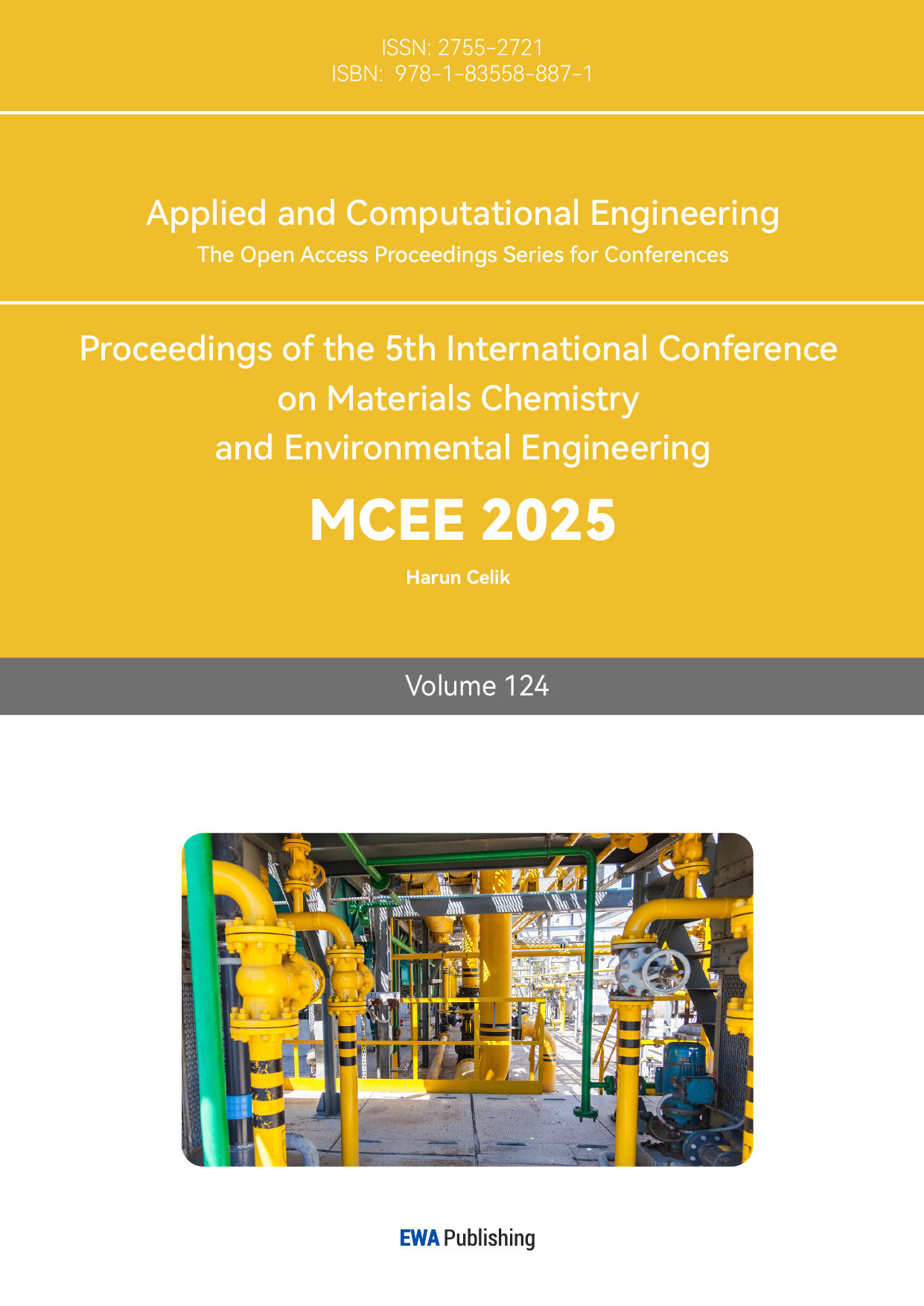1. Introduction
Superconductivity refers to the physical phenomenon in which the electrical resistance of a specific material completely disappears below a certain critical temperature (i.e., the superconducting critical temperature). In this state, the material achieves lossless current conduction and repels magnetic fields, a phenomenon known as the Meissner effect [1]. These unique characteristics of superconducting materials make them highly valuable for applications in various fields, including power transmission, magnetic levitation technology, particle accelerators, and quantum computing.
2. The Development Process of Superconducting Materials
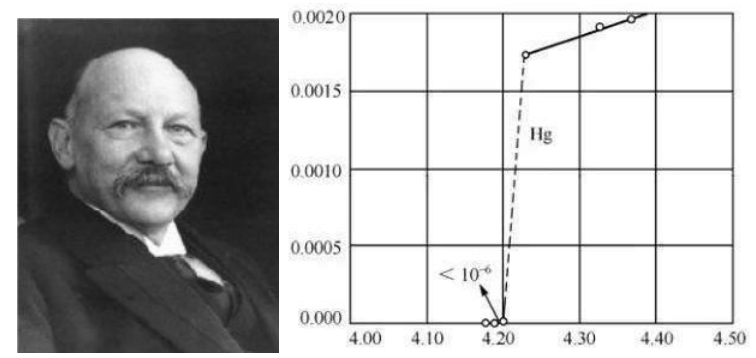
Figure 1: Physicist Kamerlingh Onnes and experimental results of mercury superconductivity [2]
As shown in Figure 1, superconductivity was first discovered in 1911 by the Dutch physicist Kamerlingh Onnes. He observed that the electrical resistance of mercury dropped to almost zero at an extremely low temperature of 4.2 K[3], thus opening a new chapter in the study of superconductivity. In 1957, American physicists Bardeen, Cooper, and Schrieffer proposed the famous "BCS theory[4-8]" , which describes superconductivity as a macroscopic quantum effect. This theory posits that electrons with opposite spins and momenta in a metal can pair up to form "Cooper pairs." These pairs move without resistance within the crystal lattice, generating a superconducting current. The BCS theory provides an approximation of the quantum mechanical many-body state in an electronic system within a metal, known as the "BCS state." In the normal state of metals, electrons move independently, but in the BCS state, they are bound into Cooper pairs through attractive interactions. The formulation of the BCS theory is based on a simplified model of electron attraction and hypothesizes a wave function, which was later proven to be exact in the high-density limit. The proposal of the BCS theory marked the formal establishment of the microscopic theory of superconductivity. It unveiled the secret of superconductivity at the microscopic level for the first time, accelerated research in superconducting physics, and ushered in a new phase of comprehensive exploration. As illustrated in Figure 2, this development became a significant milestone in the history of superconducting physics.
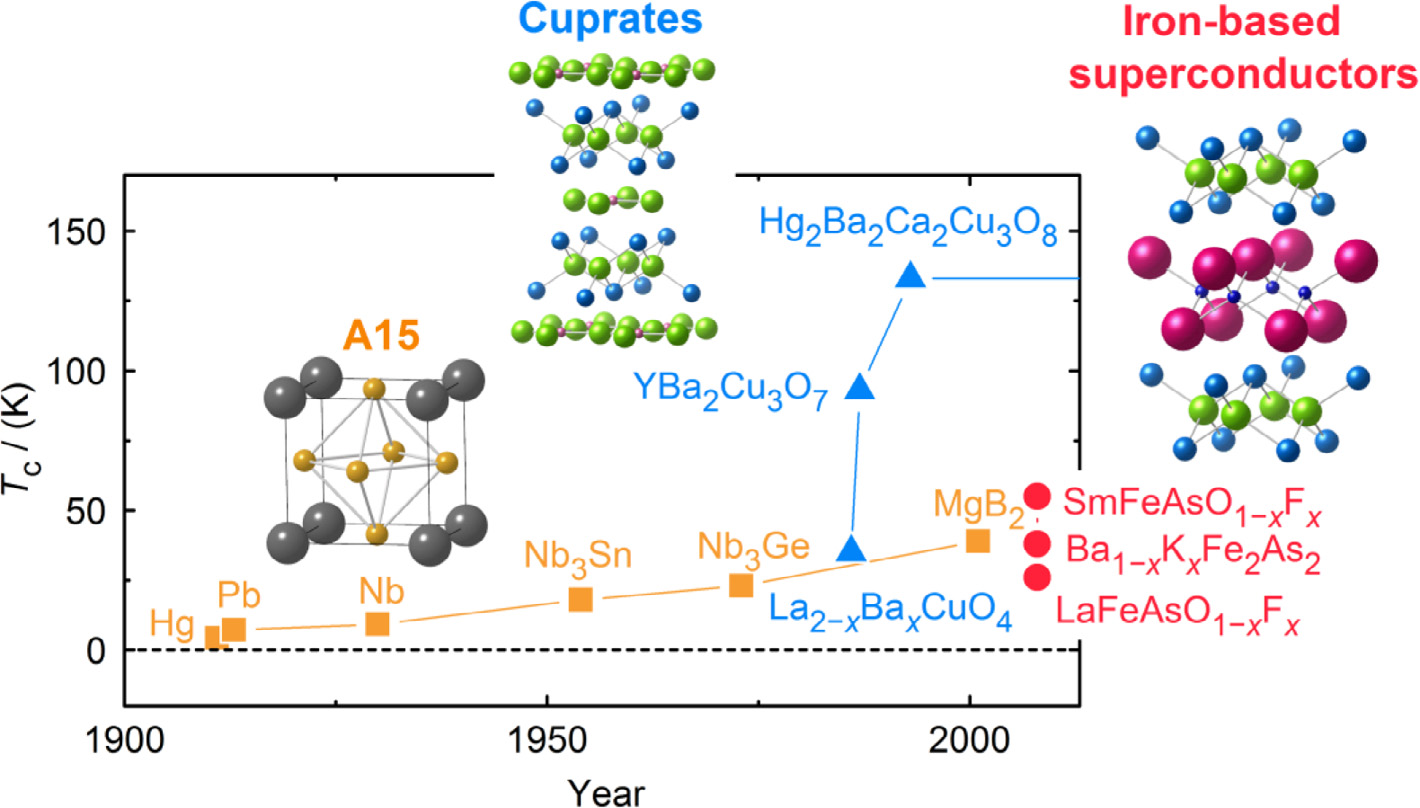
Figure 2: The crystal structures of typical superconductors at different times[9]
The publication of BCS theory greatly advanced the development of superconducting physics, but it also revealed certain limitations. Firstly, BCS theory is primarily applicable to low-temperature superconducting materials. For high-temperature superconducting materials—or even potential room-temperature superconductors—the predictions made by BCS theory show significant discrepancies compared to experimental data. According to conventional BCS theory, the critical temperature of a superconductor has an upper limit of approximately 40 K, a constraint later termed the "McMillan limit." This limit applies only to superconductors under constant pressure, and nearly all conventional BCS superconductors discovered at constant pressure have failed to surpass it. Additionally, the BCS theory is rooted in the traditional lattice vibration model and cannot fully explain the superconducting phenomena observed in certain high-temperature superconducting materials. In 1987, Zhao Zhongxian’s research team from the Institute of Physics of the Chinese Academy of Sciences and the University of Houston independently discovered superconductivity in the barium-yttrium-copper-oxygen (Ba-Y-Cu-O) system [10]. They successfully increased the critical temperature of superconductivity from 35 K in the Ba-La-Cu-O system to 90 K. This breakthrough demonstrated that, under atmospheric pressure conditions, the critical temperature of certain superconducting materials could exceed the McMillan limit, highlighting the limitations of the BCS theory. In February 2008, Hideo Hosono and his team announced the discovery of superconductivity at 26 K in F-doped LaOFeAs (later referred to as LaFeAsO[11]). Shortly after, in March of the same year, Zhao Zhongxian and other research teams successfully raised the critical temperature of the same structural system to over 40 K through rare-earth element substitution, eventually achieving a record 55 K for bulk superconductivity. This milestone marked another instance of the [12, 13]McMillan limit being surpassed, signifying the advent of a new class of high-temperature superconducting materials: iron-based superconductors. Iron-based superconductors[14] are characterized by the presence of ferromagnetic elements and exceptionally high upper critical fields. These materials are broadly categorized into four systems: the "1111" system, the "122" system, the "111" system, and the "11" system. The limitless potential of iron-based superconducting materials has spurred intensified research efforts, leading to the continuous development of new systems and a growing scale of discoveries. New breakthroughs in iron-based materials emerge frequently, as illustrated in Figure 3.
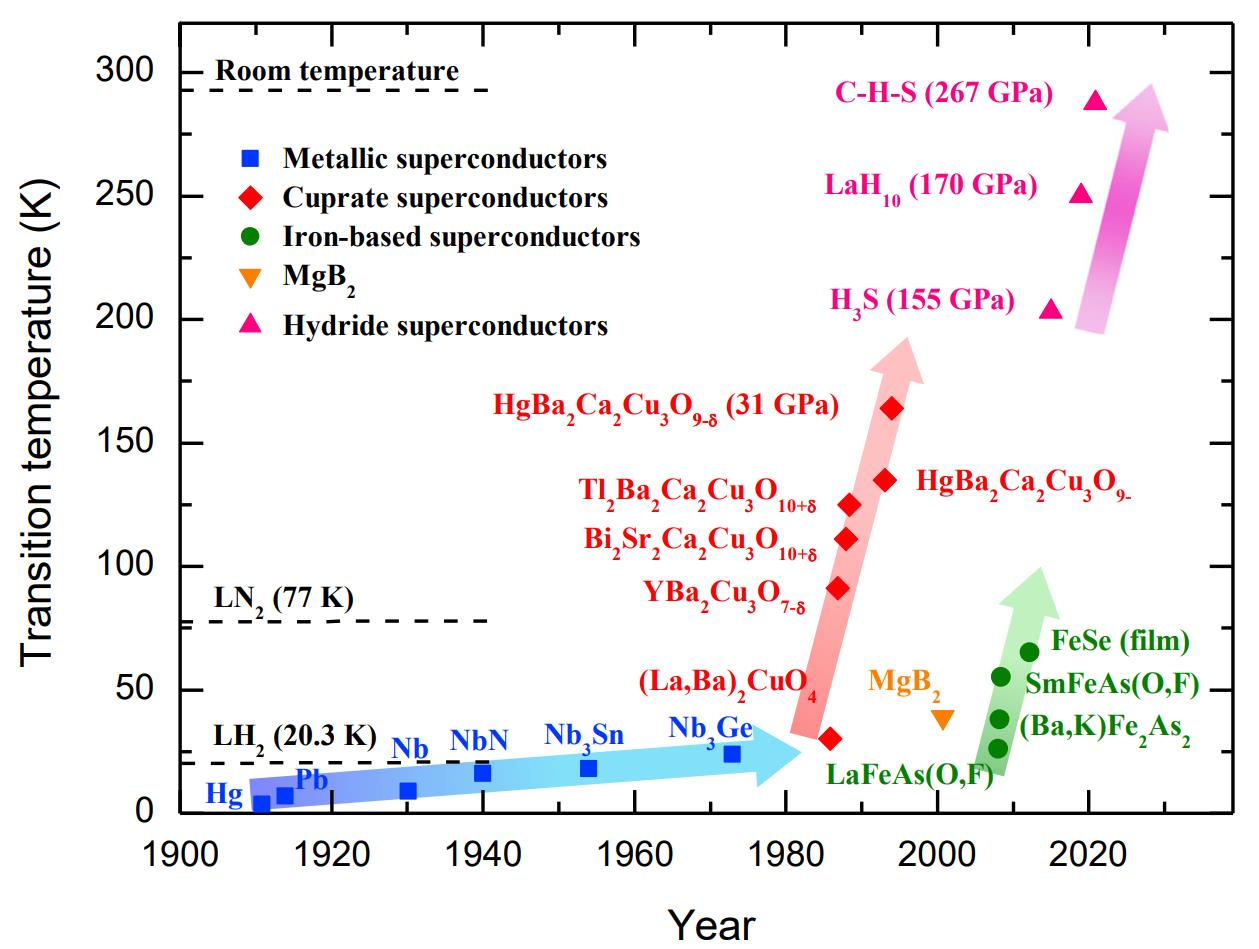
Figure 3: The superconducting critical temperatures and discovery times of superconductors[14]
The "1111" iron-based superconducting material system is notable not only for its high critical temperature (55 K) but also for its relatively stable chemical properties, as its raw materials primarily consist of oxygen-containing compounds. However, challenges arise during the preparation of superconducting wires. The elements in the "1111" system are highly reactive and tend to interact with coating materials, and there remains a lack of research on coated conductors specific to this system. In contrast, the "11" system is characterized by its simple structure and the absence of toxic elements, making it an appealing option in terms of environmental and safety considerations. However, the "11" system has a relatively low critical temperature, which limits its practical applications. This paper focuses on the "11" and "1111" systems in iron-based superconductors, examining their unique properties, challenges, and potential for future development.
3. Different Iron-Based Superconducting Material Systems
3.1. The "11" System
The "11" system is the fourth iron-based superconducting system discovered. As shown in Figure 4, it has the lowest critical transition temperature and the simplest structure among iron-based superconductors, making it a popular choice for studying these materials. FeSe-based superconducting materials, in particular, show promising development prospects due to their simple structure, the ease of preparing single crystals, and the absence of toxic elements such as arsenic (As). The first preparation of FeSe₁₋ₓ was carried out by Wu Maokun's group. With x=0.12 or x=0.18, superconducting transition occurs at a temperature of approximately 8 K. Subsequently, Wu et al. investigated the effect of Te substitution on the superconductivity of FeSe through doping. They found that as Te doping increases, the critical temperature of FeSe₁₋ₓTeₓ gradually rises. When x=0.5, the critical temperature reaches its highest value of 15.2 K[15-17].
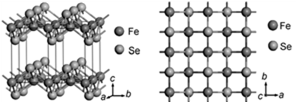
Figure 4: Schematic diagram of the FeSe crystal structure[18]
At present, practical research on FeSe-based superconducting materials focuses on preparing FeSe-based polycrystalline blocks and improving their performance. Common preparation methods include the liquid ammonia method, hydrothermal method, and solvent-heat method[19]. The large van der Waals spacing between FeSe layers provides significant opportunities for embedding various atoms or molecules. In 2010, a new superconductor, K0.8Fe2Se2, was prepared using the alkali metal intercalation method for FeSe. The transition temperature of this material reached 30 K, the highest value for a layered compound under constant pressure at the time, which caused a significant impact in the international superconducting research field. To further explore the mechanisms of iron-based high-temperature superconductivity, the discovery of new FeSe-based superconducting materials with higher transition temperatures remains a critical goal. Subsequently, Chen et al. utilized the hydrothermal reaction method to discover a stable FeSe-based high-temperature superconductor, LiOHFeSe, that can exist in air[20-22]. This material exhibited a transition temperature exceeding 40 K, injecting new vitality into the study of high-temperature superconductivity. Later, Dong Xiaoli from the Institute of Physics successfully applied ion-exchange technology to produce a centimeter-scale (Li0.8Fe0.2)OHFeSe superconducting single crystal[23], as shown in Figure 5, further advancing the development of superconducting materials. However, the superconductivity of the iron-based "11" system has certain limitations. A significant drawback is the poor controllability of typical fluorine-doped samples due to fluorine volatilization during the high-temperature preparation process. Producing high-quality samples is essential for advancing the study of iron-based superconductivity. This also highlights the significant potential for further development within the "11" system.
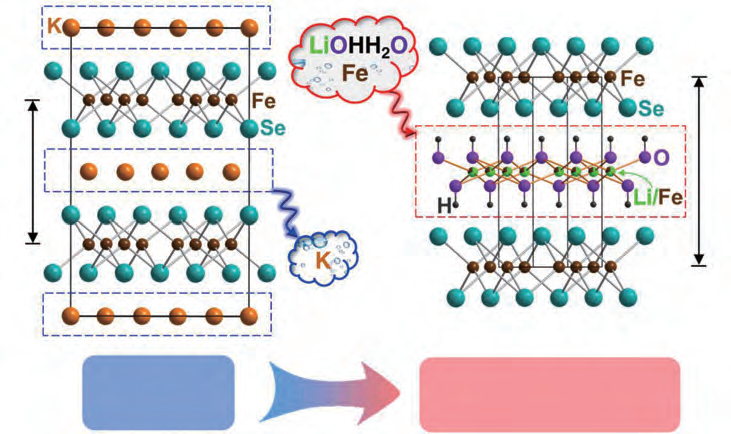
Figure 5: Schematic diagram of ion-exchange growth of (Li,Fe)OHFeSe single crystal[24]
3.2. The "1111" System
The "1111" iron-based superconducting system, discovered in 2008, was the first structural system identified among iron-based superconductors. It also holds the distinction of having the highest critical transition temperature among these systems. The system can be expressed as REOFeAs, where rare-earth elements (RE) occupy the RE site, and fluorine (F) is commonly used as a dopant at the oxygen (O) site, as illustrated in Figure 6.
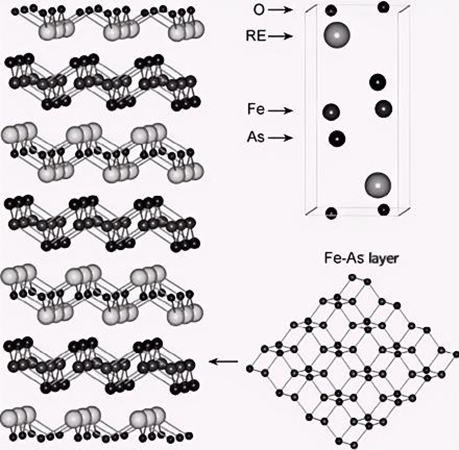
Figure 6: Schematic diagram of the "1111" type iron-based superconductor[18]
The material composition of the "1111" system primarily includes compounds such as LnOFePn (where Ln represents rare-earth elements such as La, Ce, Pr, Nd, Sm, Gd, Tb, Dy, Ho, and Y, and Pn represents P or As) and DvFeAsF (where Dv represents Ca or Sr). This system achieves a relatively high critical temperature of 55–56 K among iron-based materials[3, 12, 25, 26], providing excellent material conditions for high-temperature superconductivity (HTS). In addition to its high critical temperature, the "1111" system also exhibits a high critical current density. This property enables the material to withstand greater electrical currents under superconducting conditions, making it highly significant for applications in power transmission, manufacturing efficient magnets, and other technological fields.
In the early stages of development (around 2008), Hideo Hosono's team discovered superconductivity in the compound LaFeAsO, where replacing some oxygen atoms with fluorine increased the critical temperature to 26 K[18, 27, 28]. This discovery challenged the previously held belief that iron was unfavorable for superconductivity, marking the beginning of rapid research and development in the "1111" system. Subsequent innovative experiments led to the development of numerous new "1111" system materials, such as LnFeAsO compounds with different rare-earth elements (Ln=La, Ce, Pr, Nd, Sm, Gd, Tb, Dy, Ho, Y, etc[29].) These materials exhibit varying critical temperatures, as shown in Figure 7. Replacing different rare-earth elements in the Ln position has become a common scientific goal to explore distinct properties and further enhance the critical temperature of these materials.
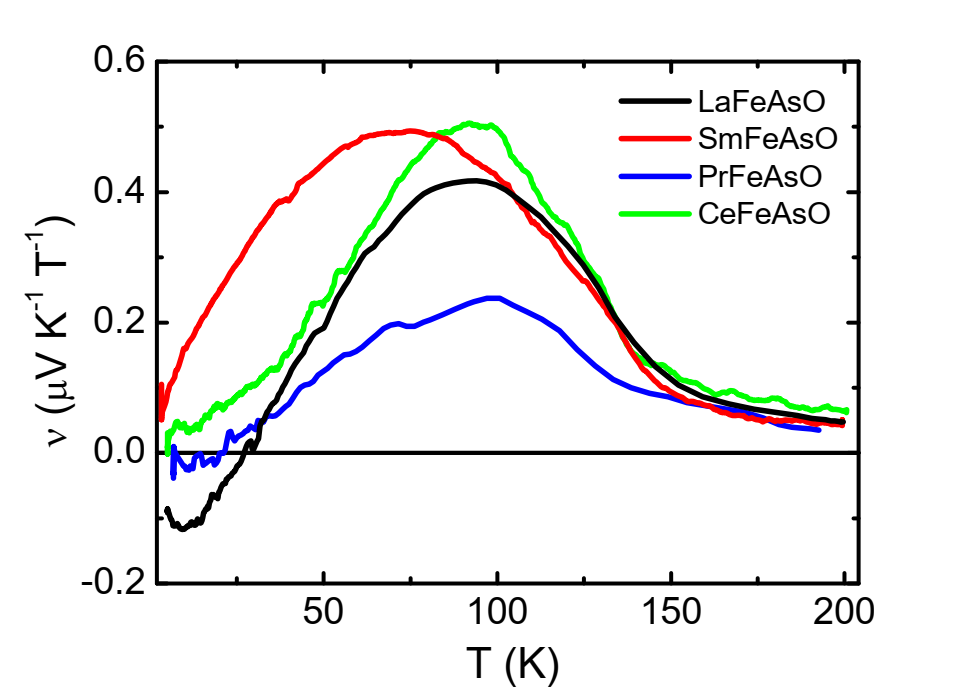
Figure 7: Critical temperatures of various 1111 system materials[30]
4. Methods for the Modification of Iron-Based Superconducting Materials
With advancements in science and technology, research on new materials has become increasingly deep and expansive. Researchers have extensively explored and discussed critical issues such as the electronic state, band structure, and the formation of Cooper pairs. In this new phase of in-depth research, scientists aim to optimize crystal structures to further enhance the critical temperature of superconducting materials. Through improvements in preparation methods, optimization of growth conditions, and multiple doping strategies, significant efforts have been made to enhance critical performance indicators, such as superconducting critical temperature and critical current density. For instance, high-pressure synthesis technology has proven to improve the superconducting properties of materials to a certain extent. The modifications to iron-based superconducting systems can be categorized into five key areas: Material Preparation, Element Substitution and Doping, Structure Regulation, High-Pressure Technology and Theoretical Research.
4.1. Material Preparation
Raw materials play a critical role in the development and preparation of new superconducting materials. The purity of raw materials fundamentally determines the success of the preparation process. Higher purity significantly enhances the controllability of experiments, minimizes the introduction of impurities that could disrupt the crystal structure, and ensures the desired material characteristics. Additionally, environmental factors such as temperature and pressure directly influence the productivity and purity of new materials, helping to avoid the formation of unintended impurities. For the "1111" system, the common preparation method involves optimizing the solid-phase reaction method[31]. This method enhances superconducting performance by refining conditions such as reaction temperature, reaction time, the grinding degree of raw materials, and pressing pressure. These optimizations improve the purity and crystallinity of the material, thereby raising the superconducting critical temperature.
In addition to traditional solid-phase reaction methods, researchers have explored advanced preparation techniques, including the sol-gel method, hydrothermal method, and chemical vapor deposition (CVD) method. These techniques enable the preparation of high-quality materials at lower temperatures while providing precise control over material composition and structure. In the study of "1111" system materials, researchers identified the presence of a second phase as a key factor limiting the performance of the Sm-1111 system. By improving and optimizing the preparation processes, it is possible to produce blocks with higher phase purity, laying the foundation for creating high-performance superconducting wires. Yamamoto et al. subsequently developed a high-purity Sm-1111 preparation method that combines sintering with thermal isostatic [32-34]pressing. This approach effectively reduces the content of the second phase, significantly improving the quality and performance of the material.
4.2. Element Substitution and Doping
Elemental doping in the "1111" system can be categorized into rare-earth doping and non-rare-earth doping, each significantly impacting the superconducting properties of the material. Rare earth doping: In the "1111" system, the type and concentration of rare-earth elements play a critical role in influencing the material's superconductivity. Doping with different rare-earth elements modifies the crystal and electronic structures of the material, thereby affecting its superconducting performance. For instance, doping with rare-earth elements such as samarium (Sm) or gadolinium (Gd) can enhance the superconducting critical temperature of the material.
Non-rare-earth elements can also alter the crystal structure and, consequently, the properties of the material, as shown in Figure 8. For example: Transition Metal Doping: Elements such as cobalt (Co) and nickel (Ni) can increase the carrier concentration of the material, thereby improving the superconducting critical current density. Fluorine (F) and Oxygen (O) Doping: These elements can modify the electronic structure of the material, leading to an increase in the superconducting critical temperature.
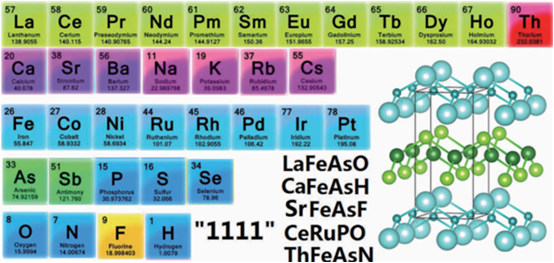
Figure 8: Elemental composition and combinations in the 1111-type iron-based superconductor
4.3. Structural Regulation
The crystal structure of the "1111" system materials features a unique layered structure, which significantly influences their electronic states and superconducting properties. Structural regulation can be achieved through various approaches: Layered Structure Modification: By adjusting the interlayer distance and interlayer interactions, researchers can alter the electronic state and enhance the superconducting properties of the material. This regulation enables better control over the material's performance. Defect Introduction: Introducing defects into the material, such as vacancies or interstitial atoms, can modify the crystal structure and electronic configuration. These changes directly affect the material's superconducting properties, offering another pathway for optimization. High-Pressure Techniques: High-pressure methods provide another means of structural regulation. Applying high pressure can induce changes in the crystal structure and electronic states of the material, leading to improvements in its superconducting performance.
4.4. Theoretical Research
Theoretical methods play a crucial role in advancing the understanding of the "1111" system materials. Techniques such as first-principles calculations enable in-depth exploration and prediction of the electronic structure, crystal structure, and superconducting mechanisms of these materials.
5. Conclusions and Outlook
This work provides a detailed discussion of the "11"and"1111" systems of iron-based superconducting materials. It reviews the development process of iron-based superconducting materials, including the well-known BCS theory and the first discovered iron-based superconductor, FeSe1−x. Additionally, the paper explores doping, substitution, characterization methods, preparation techniques, and strategies for improving specific system materials.
The realization of room-temperature superconductivity would revolutionize energy and technology. It could significantly reduce power transmission losses, enhance energy efficiency, and drive innovations in high-efficiency maglev transportation and superconducting computing. While challenges remain, scientific exploration continues to advance, and the future of room-temperature superconductivity holds tremendous promise and limitless possibilities.
To deepen our understanding of the superconducting mechanisms in "1111" system materials, the establishment of appropriate theoretical models—such as superconducting pairing models and electronic state models—will be essential. These models can provide valuable insights into the underlying physics and guide future research directions.
References
[1]. Xin-Jie, H., L.I. Su-Jiao, and Y. Qiu-Lin, Walter Weissner and the Initial Development of Superconducting Physics. Journal of Henan Normal University(Natural Science Edition), 2012.
[2]. Her, J., et al., Anisotropy in the upper critical field of FeSe and FeSe0. 33Te0. 67 single crystals. Superconductor Science and Technology, 2015. 28(4): p. 045013.
[3]. Dahl, P.F., Superconductivity after World War I and circumstances surrounding the discovery of a state B= 0. Historical Studies in the Physical and Biological Sciences, 1986. 16(1): p. 1-58.
[4]. Bao-Xin, H., Metal/semiconductor granular films prepared by RF magnetron sputtering method. College Physics, 2007. 26(9): p. 43-28.
[5]. Balian, R., H. Flocard, and M. Vénéroni, Variational extensions of BCS theory. Physics reports, 1999. 317(5-6): p. 251-358.
[6]. Hirsch, J., BCS theory of superconductivity: it is time to question its validity. Physica Scripta, 2009. 80(3): p. 035702.
[7]. Johnston, D.C., Elaboration of the α-model derived from the BCS theory of superconductivity. Superconductor Science and Technology, 2013. 26(11): p. 115011.
[8]. Komnik, A. and M. Thorwart, BCS theory of driven superconductivity. The European Physical Journal B, 2016. 89: p. 1-5.
[9]. Reif-Acherman, S., Liquefaction of gases and discovery of superconductivity: two very closely scientific achievements in low temperature physics. Revista Brasileira de Ensino de Física, 2011. 33: p. 1-17.
[10]. Yuheng, Z., Some whys of spintronics-why can the elements Fe, Co, and Ni, formerly considered incompatible with superconductivity, become superconducting when in compounds? Wuli, 2011. 40.
[11]. Kamihara, Y., et al., Iron-based layered superconductor La [O1-x F x] FeAs (x= 0.05− 0.12) with T c= 26 K. Journal of the American Chemical Society, 2008. 130(11): p. 3296-3297.
[12]. Ren, Z.-A., et al., Superconductivity at 55 K in iron-based F-doped layered quaternary compound Sm [O1–x Fx] FeAs, in Superconductivity Centennial. 2019, World Scientific. p. 223-227.
[13]. Ren, Z.A. and Z.X. Zhao, Research and Prospects of Iron‐Based Superconductors. Advanced Materials, 2009. 21(45): p. 4584-4592.
[14]. Yao, C. and Y. Ma, Superconducting materials: Challenges and opportunities for large-scale applications. Iscience, 2021. 24(6).
[15]. Hsu, F.-C., et al., Superconductivity in the PbO-type structure α-FeSe. Proceedings of the National Academy of Sciences, 2008. 105(38): p. 14262-14264.
[16]. Sato, Y., et al., Abrupt change of the superconducting gap structure at the nematic critical point in FeSe1− xSx. Proceedings of the National Academy of Sciences, 2018. 115(6): p. 1227-1231.
[17]. Sun, R., et al., Chemical Pressure Boost Record‐High Superconductivity in van der Waals Materials FeSe1− xSx. Advanced Functional Materials, 2021. 31(40): p. 2102917.
[18]. Ma, T., Y. Wan, and S. Jiang, Research progress in synthesis of iron-based superconducting materials. Chinese Sci Bull, 2009. 54: p. 557-567.
[19]. Jin, S.F., et al., Research progress on FeSe-based superconducting materials. Acta Physica Sinica -Chinese Edition-, 2018. 67(20).
[20]. Lu, X., et al., Superconductivity in LiFeO 2 Fe 2 Se 2 with anti-PbO-type spacer layers. Physical Review B, 2014. 89(2): p. 020507.
[21]. Feng, Q., A magnetically controllable metastable LiSeHFeO isomer: an ab-initio investigation from bulk to film. Journal of Materials Science, 2021. 56(2): p. 1461-1471.
[22]. Wang, G., X. Yi, and X. Shi, The electronic structure and magnetism of a new layered iron selenide superconductor: LiOHFeSe. Physics Letters A, 2015. 379(36): p. 2106-2109.
[23]. Dong, X., et al., (Li 0.84 Fe 0.16) OHFe 0.98 Se superconductor: Ion-exchange synthesis of large single-crystal and highly two-dimensional electron properties. Physical Review B, 2015. 92(6): p. 064515.
[24]. DN, D.X.J.K.Y. and Z.H.Y.J.H. YL, Hua W Sun JL Zheng P Hu W Mao YY Ma MW Zhang GM Zhou F Zhao ZX 2015. Phys. Rev. 92: p. 064515.
[25]. Cheng, P., et al., High-Tc superconductivity induced by doping rare-earth elements into CaFeAsF. Europhysics Letters, 2009. 85(6): p. 67003.
[26]. Wang, C., et al., Thorium-doping–induced superconductivity up to 56 K in Gd1− xThxFeAsO. Europhysics Letters, 2008. 83(6): p. 67006.
[27]. Kappenberger, R., et al., Solid state single crystal growth of three-dimensional faceted LaFeAsO crystals. Journal of Crystal Growth, 2018. 483: p. 9-15.
[28]. Zhigadlo, N.D., et al., Emergence of superconductivity in single-crystalline LaFeAsO under simultaneous Sm and P substitution. Journal of Alloys and Compounds, 2023. 958: p. 170384.
[29]. Gang, M. and M.Y. Hui, Single crystal growth and physical property study of 1111-type Fe-based superconducting system CaFeAsF. Acta Physica Sinica -Chinese Edition-, 2018. 67(17).
[30]. Pallecchi, I., F. Caglieris, and M. Putti, Thermoelectric properties of iron-based superconductors and parent compounds. Superconductor Science and Technology, 2016. 29(7): p. 073002.
[31]. Xiaobo, M.A., Z. Shengnan, and L.I. Chengshan, Research Progress of"1111"Type Iron-based Superconductors. Materials Review, 2015.
[32]. Yamamoto, A., et al., Evidence for electromagnetic granularity in polycrystalline Sm1111 iron-pnictides with enhanced phase purity. Superconductor Science and Technology, 2011. 24(4): p. 045010.
[33]. Arushanov, E., et al., Resistivity scaling 1111 iron-pnictide superconductors. Physica C: Superconductivity, 2011. 471(17-18): p. 509-514.
[34]. Putti, M., et al., New Fe-based superconductors: properties relevant for applications. Superconductor Science and Technology, 2010. 23(3): p. 034003.
Cite this article
Li,Y. (2025). An Overview of the 11 and 1111 Systems in Iron-Based Superconducting Materials. Applied and Computational Engineering,124,1-9.
Data availability
The datasets used and/or analyzed during the current study will be available from the authors upon reasonable request.
Disclaimer/Publisher's Note
The statements, opinions and data contained in all publications are solely those of the individual author(s) and contributor(s) and not of EWA Publishing and/or the editor(s). EWA Publishing and/or the editor(s) disclaim responsibility for any injury to people or property resulting from any ideas, methods, instructions or products referred to in the content.
About volume
Volume title: Proceedings of the 5th International Conference on Materials Chemistry and Environmental Engineering
© 2024 by the author(s). Licensee EWA Publishing, Oxford, UK. This article is an open access article distributed under the terms and
conditions of the Creative Commons Attribution (CC BY) license. Authors who
publish this series agree to the following terms:
1. Authors retain copyright and grant the series right of first publication with the work simultaneously licensed under a Creative Commons
Attribution License that allows others to share the work with an acknowledgment of the work's authorship and initial publication in this
series.
2. Authors are able to enter into separate, additional contractual arrangements for the non-exclusive distribution of the series's published
version of the work (e.g., post it to an institutional repository or publish it in a book), with an acknowledgment of its initial
publication in this series.
3. Authors are permitted and encouraged to post their work online (e.g., in institutional repositories or on their website) prior to and
during the submission process, as it can lead to productive exchanges, as well as earlier and greater citation of published work (See
Open access policy for details).
References
[1]. Xin-Jie, H., L.I. Su-Jiao, and Y. Qiu-Lin, Walter Weissner and the Initial Development of Superconducting Physics. Journal of Henan Normal University(Natural Science Edition), 2012.
[2]. Her, J., et al., Anisotropy in the upper critical field of FeSe and FeSe0. 33Te0. 67 single crystals. Superconductor Science and Technology, 2015. 28(4): p. 045013.
[3]. Dahl, P.F., Superconductivity after World War I and circumstances surrounding the discovery of a state B= 0. Historical Studies in the Physical and Biological Sciences, 1986. 16(1): p. 1-58.
[4]. Bao-Xin, H., Metal/semiconductor granular films prepared by RF magnetron sputtering method. College Physics, 2007. 26(9): p. 43-28.
[5]. Balian, R., H. Flocard, and M. Vénéroni, Variational extensions of BCS theory. Physics reports, 1999. 317(5-6): p. 251-358.
[6]. Hirsch, J., BCS theory of superconductivity: it is time to question its validity. Physica Scripta, 2009. 80(3): p. 035702.
[7]. Johnston, D.C., Elaboration of the α-model derived from the BCS theory of superconductivity. Superconductor Science and Technology, 2013. 26(11): p. 115011.
[8]. Komnik, A. and M. Thorwart, BCS theory of driven superconductivity. The European Physical Journal B, 2016. 89: p. 1-5.
[9]. Reif-Acherman, S., Liquefaction of gases and discovery of superconductivity: two very closely scientific achievements in low temperature physics. Revista Brasileira de Ensino de Física, 2011. 33: p. 1-17.
[10]. Yuheng, Z., Some whys of spintronics-why can the elements Fe, Co, and Ni, formerly considered incompatible with superconductivity, become superconducting when in compounds? Wuli, 2011. 40.
[11]. Kamihara, Y., et al., Iron-based layered superconductor La [O1-x F x] FeAs (x= 0.05− 0.12) with T c= 26 K. Journal of the American Chemical Society, 2008. 130(11): p. 3296-3297.
[12]. Ren, Z.-A., et al., Superconductivity at 55 K in iron-based F-doped layered quaternary compound Sm [O1–x Fx] FeAs, in Superconductivity Centennial. 2019, World Scientific. p. 223-227.
[13]. Ren, Z.A. and Z.X. Zhao, Research and Prospects of Iron‐Based Superconductors. Advanced Materials, 2009. 21(45): p. 4584-4592.
[14]. Yao, C. and Y. Ma, Superconducting materials: Challenges and opportunities for large-scale applications. Iscience, 2021. 24(6).
[15]. Hsu, F.-C., et al., Superconductivity in the PbO-type structure α-FeSe. Proceedings of the National Academy of Sciences, 2008. 105(38): p. 14262-14264.
[16]. Sato, Y., et al., Abrupt change of the superconducting gap structure at the nematic critical point in FeSe1− xSx. Proceedings of the National Academy of Sciences, 2018. 115(6): p. 1227-1231.
[17]. Sun, R., et al., Chemical Pressure Boost Record‐High Superconductivity in van der Waals Materials FeSe1− xSx. Advanced Functional Materials, 2021. 31(40): p. 2102917.
[18]. Ma, T., Y. Wan, and S. Jiang, Research progress in synthesis of iron-based superconducting materials. Chinese Sci Bull, 2009. 54: p. 557-567.
[19]. Jin, S.F., et al., Research progress on FeSe-based superconducting materials. Acta Physica Sinica -Chinese Edition-, 2018. 67(20).
[20]. Lu, X., et al., Superconductivity in LiFeO 2 Fe 2 Se 2 with anti-PbO-type spacer layers. Physical Review B, 2014. 89(2): p. 020507.
[21]. Feng, Q., A magnetically controllable metastable LiSeHFeO isomer: an ab-initio investigation from bulk to film. Journal of Materials Science, 2021. 56(2): p. 1461-1471.
[22]. Wang, G., X. Yi, and X. Shi, The electronic structure and magnetism of a new layered iron selenide superconductor: LiOHFeSe. Physics Letters A, 2015. 379(36): p. 2106-2109.
[23]. Dong, X., et al., (Li 0.84 Fe 0.16) OHFe 0.98 Se superconductor: Ion-exchange synthesis of large single-crystal and highly two-dimensional electron properties. Physical Review B, 2015. 92(6): p. 064515.
[24]. DN, D.X.J.K.Y. and Z.H.Y.J.H. YL, Hua W Sun JL Zheng P Hu W Mao YY Ma MW Zhang GM Zhou F Zhao ZX 2015. Phys. Rev. 92: p. 064515.
[25]. Cheng, P., et al., High-Tc superconductivity induced by doping rare-earth elements into CaFeAsF. Europhysics Letters, 2009. 85(6): p. 67003.
[26]. Wang, C., et al., Thorium-doping–induced superconductivity up to 56 K in Gd1− xThxFeAsO. Europhysics Letters, 2008. 83(6): p. 67006.
[27]. Kappenberger, R., et al., Solid state single crystal growth of three-dimensional faceted LaFeAsO crystals. Journal of Crystal Growth, 2018. 483: p. 9-15.
[28]. Zhigadlo, N.D., et al., Emergence of superconductivity in single-crystalline LaFeAsO under simultaneous Sm and P substitution. Journal of Alloys and Compounds, 2023. 958: p. 170384.
[29]. Gang, M. and M.Y. Hui, Single crystal growth and physical property study of 1111-type Fe-based superconducting system CaFeAsF. Acta Physica Sinica -Chinese Edition-, 2018. 67(17).
[30]. Pallecchi, I., F. Caglieris, and M. Putti, Thermoelectric properties of iron-based superconductors and parent compounds. Superconductor Science and Technology, 2016. 29(7): p. 073002.
[31]. Xiaobo, M.A., Z. Shengnan, and L.I. Chengshan, Research Progress of"1111"Type Iron-based Superconductors. Materials Review, 2015.
[32]. Yamamoto, A., et al., Evidence for electromagnetic granularity in polycrystalline Sm1111 iron-pnictides with enhanced phase purity. Superconductor Science and Technology, 2011. 24(4): p. 045010.
[33]. Arushanov, E., et al., Resistivity scaling 1111 iron-pnictide superconductors. Physica C: Superconductivity, 2011. 471(17-18): p. 509-514.
[34]. Putti, M., et al., New Fe-based superconductors: properties relevant for applications. Superconductor Science and Technology, 2010. 23(3): p. 034003.





